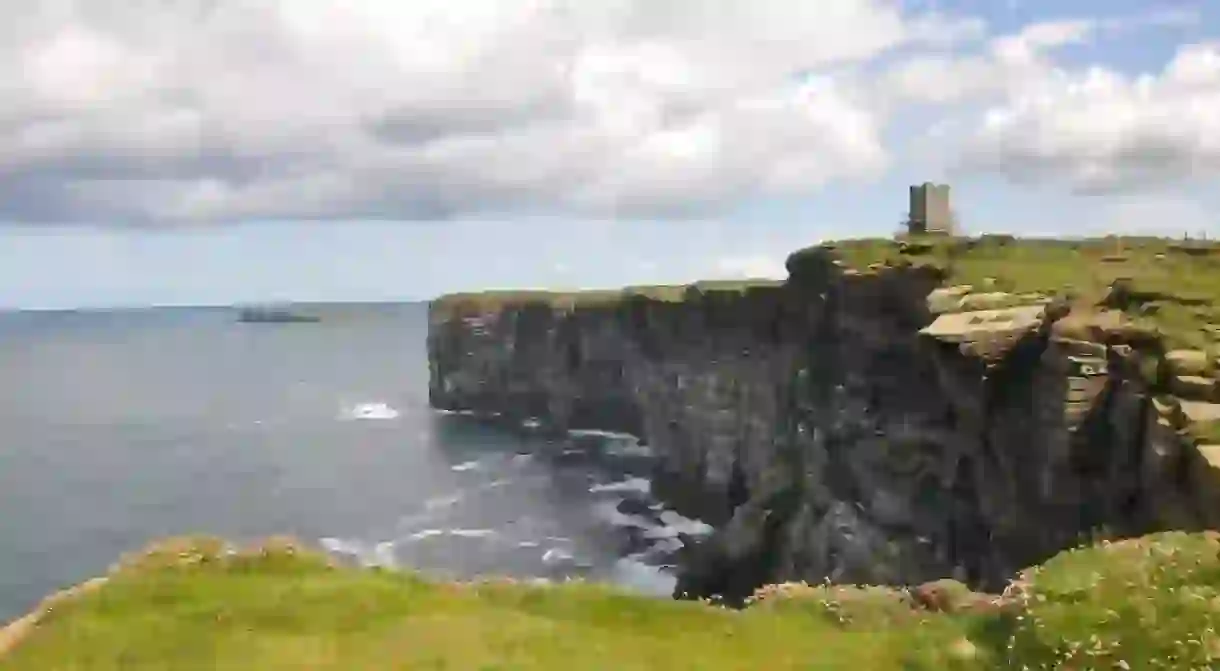Stunning Places You Must See in Orkney, Scotland

The Orkney Islands are full of unspeakable beauty and achingly stunning coastal vistas. Home to areas of great archeological importance, bird sanctuaries perched atop cliffs, secret beaches and frequent visits from the aurora borealis herself, Orkney is a true paradise. Discover the magic with our pick of must-see places.
Did you know – Culture Trip now does bookable, small-group trips? Pick from authentic, immersive Epic Trips, compact and action-packed Mini Trips and sparkling, expansive Sailing Trips.
Old Man of Hoy
Natural Feature
At 450ft (137m), the Old Man of Hoy is one of the UK’s tallest sea stacks, and stands surrounded by some of the highest and most dramatic sea cliffs in Britain at St John’s Head. Found ascending from the ocean at Hoy, Orkney’s most hilly island, this red sandstone wonder was once an arch with two prongs for legs until sea and wind erosion took its toll. Although many geologists believe that the Old Man will one day collapse (there’s already a large crack), this magnificent sea stack is a playground for hardcore climbers. The first ascent took place in 1966.
The Italian Chapel
Church
This striking holy haven wouldn’t look out of place in Italy. It rises out of Orkney’s wild landscape on the uninhabited island of Lamb Holm. Built by Italian prisoners of war shipped to Orkney during WWII to construct the Churchill Barriers, the chapel is a symbol of hope. Amazingly, it is made from two converted old Nissen huts and scavenged materials.
Marwick Head
Natural Feature
An awe-inspiring sight, the RSPB nature reserve at Marwick Head is a bustling metropolis for birds. Set on a clifftop location, this seabird city has outstanding sweeping views, albeit a tad vertigo inducing. Up to 25,000 nesting seabirds come here during the summer, including puffins, fulmars, kittiwakes and razorbills. Lucky bird enthusiasts may even catch a glimpse of Arctic skuas and red-throated divers nestling upon the dramatic sandstone cliff ledges.
Ring of Brodgar
Archaeological site, Ruins

As one of the most iconic symbols of Orkney’s rich prehistoric past, the Ring of Brodgar is one for the bucket list. Covering an area of around 8,500 metres, this archaeological gem is the third largest stone circle in the British Isles, and once had an impressive 60 stones. A natural hill-hugged amphitheatre creates the perfect stage for what is one of the oldest stone circles in existence. Many believe the Ring of Brodgar to be a religious shrine or place of ritual, while others insist it was constructed for astronomical purposes to view the equinox and solstice.
Skara Brae
Archaeological site, Ruins
Skara Brae is the star of Orkney’s Neolithic-themed show. Crowned one of the world’s best-preserved Neolithic settlements, this former village is one in a million. Perfectly preserved for centuries until a storm unveiled its contents under a mound, the site still contains its original fixtures, like stone age ‘fitted’ dresser furniture, box beds, the original central hearths, water-tight tanks used for storage and carefully covered passageways that link the dwellings to each other.
Sands of Wright
Hiking Trail
Awash with wildflowers and golden sand, the Sands of Wright beach is a true hidden gem. In South Ronaldsay, this scenic bay is surrounded by sparkling turquoise waters. Perfect for wild foraging, there are almost endless varieties of seaweed. Whether a serene stroll or epic expedition, the Sands of Wright is a wee slice of heaven on earth.
St Magnus Cathedral
Cathedral
St Magnus Cathedral is one of Orkney’s many Viking marvels. Imposing yet magnetic, the church dates back to 1137, when it was founded by a Viking to honour his uncle St Magnus. Known as the ‘Light of the North’, St Magnus is the most northerly cathedral in the UK, and one of Scotland’s best preserved medieval churches. Graced with spiraling pillars inside, this beauty took over three centuries to build.
Scapa Flow
Natural Feature
Home to an underwater oasis brimming with a vibrant population of sea creatures, Scapa Flow is flooded with history. Sheltered by Orkney’s Mainland and South Isles, this body of water has convenient access to the Atlantic Ocean and North Sea, and was used as a harbour during the Viking age. Over the centuries, Scapa Flow’s prime position has served as a safe port for ships and played an important role in both world wars. Today, the waters are one of the world’s best wreck-diving sites, and an area of great natural, archaeological and cultural interest.
The Standing Stones of Stenness
Archaeological site, Ruins

Measuring up to six metres tall, the four remaining stones that make up the mighty Standing Stones Of Stenness have been around for over 5000 years. These megaliths once encircled a massive hearth forming a ring of 12 guarded by a tall ditch and bank, which over time was ploughed away. As one of the four Heart of Neolithic Orkney sites, this age-old place is thought to have served as an important Neolithic domestic and ritual monument. However, the exact truth as to its purpose is still shrouded in mystery.
Stromness
Natural Feature
When the Vikings landed on Stromness they named it Hamnavoe, or ‘safe haven’. Orkney’s second-largest town–with its winding stone streets, iconic harbour and independent shops selling handmade arts and crafts–is a perpetual source of inspiration for creatives who come to the Mainland. Peppered with terraces of picturesque houses and welcoming faces, the old-timey charm is part of what makes Stromness stand out. With attractions like the world-renowned Pier Arts Centre, a museum and lively pubs, you won’t want to leave.













